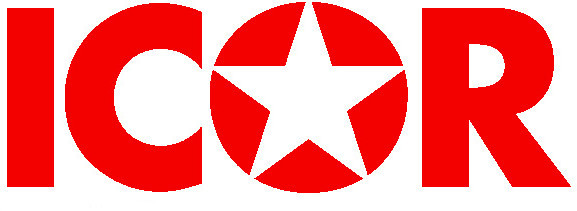The political and health context in the Gaza Strip
Existing translations
The Gaza Strip suffers from the imposed siege since 2006, which has been intensified after the Palestinian political division in 2007, consequently we have two governments: one in the West Bank and the other in the Gaza Strip supervised by Hamas, where Mr. Ismail Haniyeh continued to govern the Gaza Strip as Prime Minister for several years, and since 2017, an administrative committee has been formed called the Governmental Committee, which to date supervises government institutions and ministries in the Gaza Strip.
In connection with this reality, the living, social, economic and health conditions of citizens in the Gaza Strip - whose population exceeds 2 million citizens - are still worsening, and this situation can be summarized as follows:
-
An increase in the poverty and unemployment rates that reached 53% and exceeded 70% among youth.
-
A complex crisis represented in power outages for more than 12 hours / day, and sometimes exceeds 16 hours / day.
-
Severe restrictions on the movement of individuals, especially patients, through the two main entry points: the Rafah crossing from the Egyptian side and the Erez checkpoint (Beit Hanoun) from the occupied territories.
-
Severe restrictions on the movement of goods, including medical equipment (as it is strictly prevented to send medical equipment from the Gaza Strip to abroad for maintenance, which has caused the disruption of a large proportion of medical equipment of government, NGOs and private institutions).
-
Strict restrictions on exports, especially agriculture, from the Gaza Strip to abroad and imports of basic commodities.
-
Strong restrictions on receiving funds and bank transfers to and from the Gaza Strip.
-
Large No. of government sector employees in the Gaza Strip have been referred to early retirement.
-
Adopting the deduction policy for government sector employees’ salaries.
-
The private sector has been negatively affected and its activities has been limited in the basic and vital fields only.
-
Increased psychological and social pressure and its reflection on the high indicators of violence and social crimes.
-
The weak infrastructure and delaying the reconstruction works of homes and facilities that was resulted by the Israeli frequent aggression on the Gaza Strip. 12- Inability of governmental and NGOs institutions to provide all needed services to citizens, mainly health services that are needed by the marginalized and most affected groups (the injuries from Israeli aggressions or from the Great Return March).
-
The acute shortage of medicines, consumables, medical supplies and medical equipment necessary for the continuation of the health sector’s work, where the deficit in medicines has reached 46%, while the percentage of the deficit in medical disposable has exceeded 28%.
The Health Sector:
The health sector in the Gaza Strip consists of three basic components; (I) the government health sector which is the largest component of the health sector and provides services in the field of primary, secondary and tertiary health care, (II) the health program of the United Nations Relief and Works Agency for Palestine Refugees in the Middle East (UNRWA) that provides its services mainly in the field of primary health care (III) the Non-governmental and private sector, which provides multiple services in the field of primary, secondary and tertiary health care services.
The health sector in the Gaza Strip suffers from successive crises due to the blockade imposed on the Gaza Strip 14 years ago, in addition to the catastrophic results created by frequent attacks and aggression in (2008 - 2012-2014), which led the health sector and all its components to a weak state in providing health services due to lack of material and human resources that led to a long waiting list for patients to undergo surgical operations at MoH hospitals.
The number of hospitals in the Gaza Strip is 32 hospitals, of which 13 are government hospitals, 17 NGOs’ Hospitals and 2 Military Hospitals, and the bed capacity is 2943 beds, of which 2240 for the Ministry of Health, 527 for the NGOs sector, and 177 for the military sector.
The number of Primary health care centers 158 centers, including 51 centers for the government sector, 22 centers for UNRWA and 95 centers for the NGOs sector. The number of Intensive Care Unit (ICU) beds in the Gaza Strip hospitals is 110 beds.
Union of Health Work Committees:
The Union of Health Work Committees (UHWC) is grassroots, community based, Palestinian non-governmental, non-profit and the largest and most active health organization in the Gaza Strip. It has been established in 1985 under license No. 2042. UHWC provides holistic health care to the population in the Gaza Strip, with a focus on the most vulnerable marginalized sector of Palestinian society. UHWC is committed to raise the level and quality of health care services within the community, working to ensure that all individuals and families have equal access to quality healthcare. UHWC seeks to improve the overall physical, psychological and social wellbeing of all Palestinians regardless of racial, political, social or religious status, through its specialized facilities, as well as through outreach services and activities with a community based approach.
The UHWC adopts the slogan "Health service is a right to whoever needs it" and the facilities of the UHWC are distributed in the 5 governorates of the Gaza Strip, where UHWC has 6 primary health care centers, 7 community centers, in addition to Al Awda Hospital. UHWC’s services reach more than 500,000 citizens annually, which is more than a quarter of the population of the Gaza Strip. Because of the intensity of the siege, especially in the last two years, the UHWC faces difficult challenges due to the increase needs to health services, especially by the most affected groups, as the economic and living conditions have increased the sector of vulnerability and poverty.
In light of the spread of the Corona pandemic, the health sector focused most of its services and manpower to provide services for quarantine and domestic centers, as the Ministry of Health stopped the elective surgical interventions and outpatient clinics in hospitals, and the Palestinian Refugee Relief and Works Agency (UNRWA) restricted and reduced primary health care services to citizens, which forced UHWC to adopt a strategy based on continuing to provide health services and expand areas of work. This strategy placed additional burdens on the Union of Health Work Committees as an ethical, national and professional commitment in light of its strategic slogan “Health service is a right for whoever needs it”.
Until now, the UHWC is still able to continue to provide services due to the alliances and partnerships that the UHWC accumulated through its work process and experience for more than 35 years.
Because of Corona pandemic, the UHWC works in several directions:
-
Providing safety and security measures for UHWC staff so that they can continue to provide health services and respond to emerging needs.
-
Providing safety and security measures for patients and beneficiaries to limit the spread and transmission of infection from the external environment to the UHWC health facilities and vice versa.
-
Mobilizing resources to meet patients' needs of medications and medical supplies for laboratory tests, x-rays and medical diagnostics, as it is expected that the number of beneficiaries will increase from 1750 beneficiaries from the UHWC facilities daily to 2500 beneficiaries.
-
Setting an emergency plan to continue providing services in light of the transition to the corona virus dissemination stage in the Gaza Strip for a period of six months, starting from 1/4/2020 to 10/31/2020.
-
Enhancing the UHWC's capabilities to respond to the health needs in the field of primary, secondary and tertiary health care for marginalized groups that have increased due to the loss of tens of thousands of their job opportunities due to government measures to confront the threat of the spread of the Corona pandemic (the closure of cafes, cafeterias, popular markets and the loss of the workers in these places to their job opportunities).
-
UHWC's response to patients' health needs in light of the Ministry of Health's focus on emergency services and efforts to confront the spread of the Corona pandemic.
-
Response of the UHWC to some specialized services, which include: Providing ventilators and ICU beds to increase the number of intensive care beds in Gaza Strip hospitals from 48 to 60 beds, especially in light of fears of the spread of the Corona pandemic.
-
Using social media techniques to spread awareness and raise the sensitivity of society.
Document Actions




